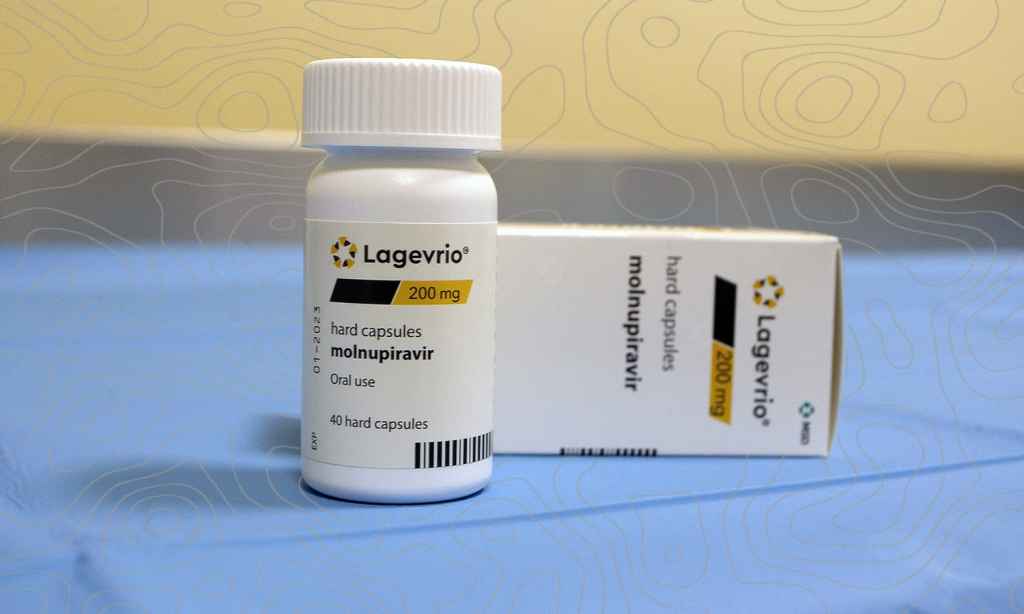Australia has just approved two new treatments for the fight against COVID. Both are at-home medications that are designed to be taken as soon as you register a positive test and will help stop the spread of the disease.
The medications are intended for use by adults who are at particular risk of developing the disease, so don’t expect that everyone will have access or that you’ll be able to get them very easily.
The two treatments are Pfizer’s new Paxlovid, a combination of their new nirmatrelvir and an older drug called ritonavir, and Marck & Co’s Lageviro using molnupiravir. They are the first oral treatments for COVID to be approved for use in Australia.
The Therapeutic Goods Administration has said that these medications are meant for people “who do not require initiation of oxygen and who are at increased risk of progression to hospitalisation or death”.
“Neither product is intended to be used as a substitute for vaccination against COVID-19.”
Health Minister Greg Hunt told ABC Radio that the pills are expected to arrive within weeks into the country and that the government has secured 500,000 courses of Paxlovid and 300,000 of Lageviro.
“They will help people who are at increase risk of going from mild to moderate and deemed by medical professionals to have the risk of progression of more serious conditions,” he said.
Here’s what you need to know about the drugs.
How Do the New COVID Pills Work?
Both pills have already been cleared for use in a number of countries, including the United States, while several other regions, notably Europe, are currently looking into their efficacy.
Molnupiravir works by “inhibiting replication of the SARS-CoV-2 virus.” According to one study, the drug works by binding with SARS-CoV-2 viral RNA, causing it to reproduce ineffectively and eventually rendering it unable to replicate.
The nirmatrelvir part of the Paxlovid medication “blocks the activity of a protease enzyme that the coronavirus needs in order to replicate,” says the TGA. It is administered along with a low-dose of ritonavir, a medication used in the treatment of HIV, to keep concentrations of the former drug high in the body during treatment.
Both are designed to be taken pill form, two to three times a day for five days and need to be administered “as soon as possible” after a COVID diagnosis.
How Effective Are They?
Paxlovid has shown to be pretty damn effective in limiting the symptoms of COVID. In three different studies carried out by Pfizer, Paxlovid was shown to reduce the risk of hospitalisation and death by almost 90%.
Anne Harris, Pfizer Australia and New Zealand Managing Director, has said that the drug “Has the potential to transform COVID-19 treatment and help lessen the devastating impact of the virus that has now taken over 5 million lives globally.”
For Lageviro, the results are less clear cut. While preliminary trials found that the drug can significantly reduce the risk of hospitalisation and death in those with COVID, later results found the drug to be not as effective as first hoped.
While early data suggested that it cut the risk of severe illness by 50%, later trials found that this risk was only reduced by about 30%, an outcome that has been called “pretty lacklustre,” by scientists.
Still, the pill is much cheaper than Pfizer’s drug and therefore can be distributed more easily to developing nations. It’s also hoped that studies will be able to confirm whether a combination of these drugs might be even more effective in treating COVID.
What Are the Side Effects of Paxlovid and Lageviro?
There are some side effects of the drugs which should be noted.
Lageviro is not recommended to be used while pregnant or breastfeeding and that those who are those undergoing treatment should use contraception. Men are also advised to use contraception for at least three months after a course of treatment, suggesting that there may be some issues with conceiving and possible birth complications with the drug. This could also be simply because the studies have not been done yet on how they might affect birth.
Pfizer has said that Paxlovid saw “adverse events” in 19% of treatment cases, compared with a placebo showing similar in 21% of cases. They say that “most” of these were mild.
Like Lageviro, Paxlovid is also not recommended for use during pregnancy and breastfeeding or by “women of childbearing potential.” Women are also advised to use contraception while undergoing treatment.
Paxlovid also appears to interfere with “a number” of commonly used medications, either increasing their concentrations to harmful levels or reducing the effectiveness of the anti-COVID drug. It’s also not recommended for use by people with “severely reduced kidney or liver function”
When Will We Get Paxlovid and Lageviro?
In October of last year, Pfizer announced an agreement with the Australian Government to supply 500,000 treatment courses of Paxlovid over 2022. As Hunt has said, the first of these should begin arriving within weeks.
Based on that information, we could start seeing their use by February.
Read more stories from The Latch and subscribe to our email newsletter.







